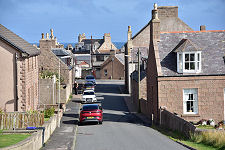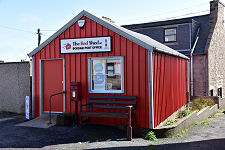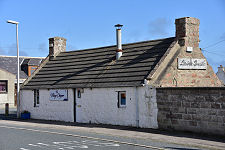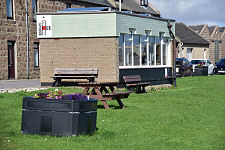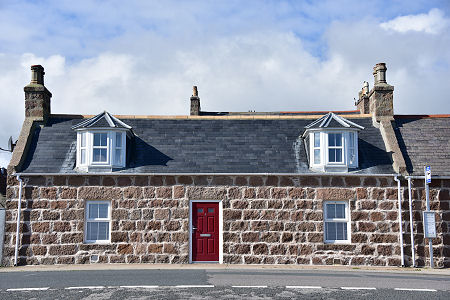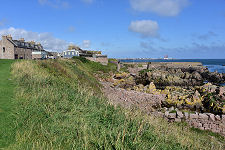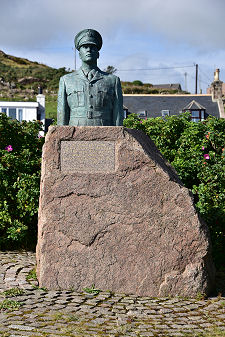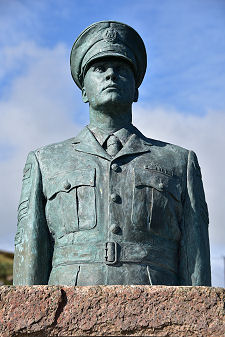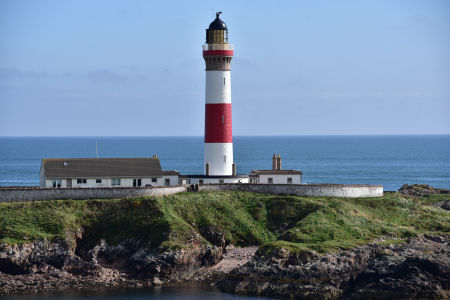 Buchan Ness Lighthouse |
The village of Boddam lies just to the south of Peterhead, and is separated from it by Sandford Bay and Peterhead Power Station. Opinions differ as to whether Buchan Ness, a headland reached by a bridge from the village, is in fact the most easterly point in mainland Scotland: it depends on whether you count Keith Inch just over two miles to the north. Once an island, this now forms part of Peterhead harbour and projects a little further east than Buchan Ness.
Being so close to Peterhead, it is inevitable that Boddam tends to be overshadowed by it. This wasn't always so: a map produced in the 1600s showed Boddam to be larger than its northern neighbour. Just to the south stood Boddam Castle, built by the Keiths of Ludquharn in the 1500s. The most notable early member of the family to be born at Boddam Castle was Sir William Keith (1669-1749), who went on to become Lieutenant Governor of Pennsylvania and Delaware.
Today only fragmentary ruins remain of Boddam Castle. The headland location chosen by the Keiths for their castle was guarded by the start of the cliffs that run for five miles south-west from here to Slains Castle and Cruden Bay. About half way along this stretch of cliffs is the Bullers of Buchan, a collapsed sea cave forming an almost circular pot and an arch. (Continues below images...)
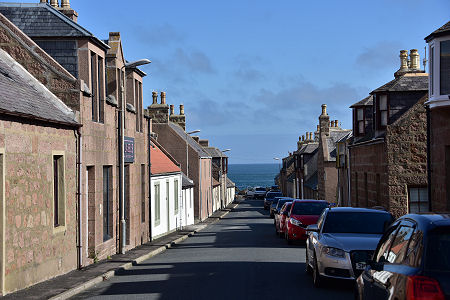 Queen's Road |
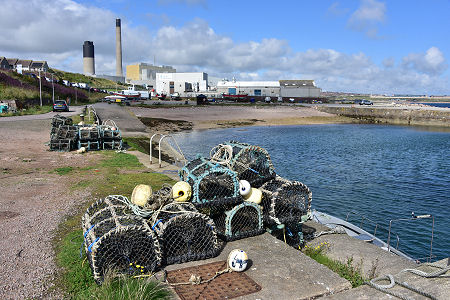 Harbour, Fish Processing Plan and Power Station |
Boddam's early development was largely due to the shelter afforded by Buchan Ness, which made it an attractive base for fishing boats. This led to a short-lived fishing station being established here by the Dutch in the years around 1700. But the development of modern Boddam dates back to a decision in the 1820s by the Northern Lighthouse Board to build a lighthouse on Buchan Ness. This was completed in 1827 by Robert Stevenson. The lighthouse tower is 35m high, and there are 166 steps leading to the top. The distinctive red band was added in 1910. Buchan Ness Lighthouse was automated in 1988, and the foghorn, known locally as the Boddam Coo fell silent in 2000.
The arrival of the lighthouse was followed in 1831 by the construction of a harbour. In the 1840s this was greatly expanded by George Hamilton-Gordon, the 4th Earl of Aberdeen. Further harbour improvements were made in the 1870s to provide for ships exporting the red Peterhead granite being quarried in ever larger quantities from Stirling Hill, a mile to the south-east. These included the construction of a tramway linking the quarries with the harbour. The quarries also helped attract the railway to Boddam: a branch line from Ellon arrived in 1897.
The early decades of the 1900s saw much of Boddam's fishing fleet attracted away by the better harbour facilities available at Peterhead. The railway closed to passengers in 1932, and to freight in 1945. After the Second World War, Boddam became home to RAF Buchan, an important Cold War radar station tracking Russian aircraft over the North Atlantic. Until 2005 this was also home to one of the UK's two "Control and Reporting Centres", which oversaw the UK's air defences. This role has since passed to RAF Boulmer in Northumberland. A statue beside one of the roads into the village remembers the link with RAF Buchan.
Like many other communities across Aberdeenshire, Boddam has benefitted considerably from the oil boom since the 1970s. Boddam harbour has at times served as an oil support base, and in 1976 rebuilding took place to allow the harbour to be used to support the new oil-fired Peterhead Power Station, which continues to dominate views north-west from the village. In the early 1990s the power station was converted to be able to use gas as well as oil. Boddam harbour remains home to a number of small fishing boats, and to Thistle Seafood's fish processing plant.
 Boddam Harbour |

|
|
|
Visitor InformationView Location on MapWhat3Words Location: ///marsh.sofa.cracking |
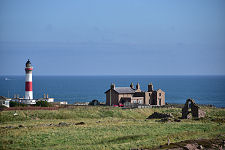 Lighthouse and Castle Ruins |
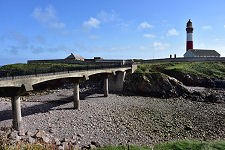 Bridge to Buchan Ness |
 Shoreside Cottages |
 The Seaview Hotel |
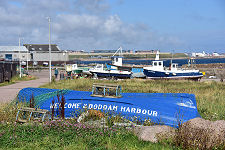 Welcome to Boddam Harbour |
 Boats in Harbour |
 Boats on Harbourside |
 Well-Travelled Fish Boxes |
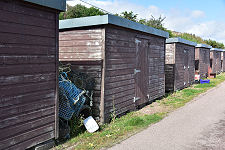 Fishing Equipment Stores |
 The View South from Boddam |
